Suzanne Sinaiko never wanted a vegetable garden in the plot near her East End home.
“My mother said to me right at the beginning, ‘Look, I can get vegetables at the A&P; I want flowers,’ ” says Jon Sinaiko, a filmmaker who first planted the garden in the 1970s.
And flowers there have been. For close to 50 years, Suzanne’s Garden at 608 Commercial St. has quietly blossomed with plants and people’s lives. There have been weddings. The wisteria arbor has sheltered coffee dates and yoga practice. Salem Cigarettes even once tried to have a surreptitious ad shoot there, right under Suzanne’s nose. She was not too pleased about that, Jon says.
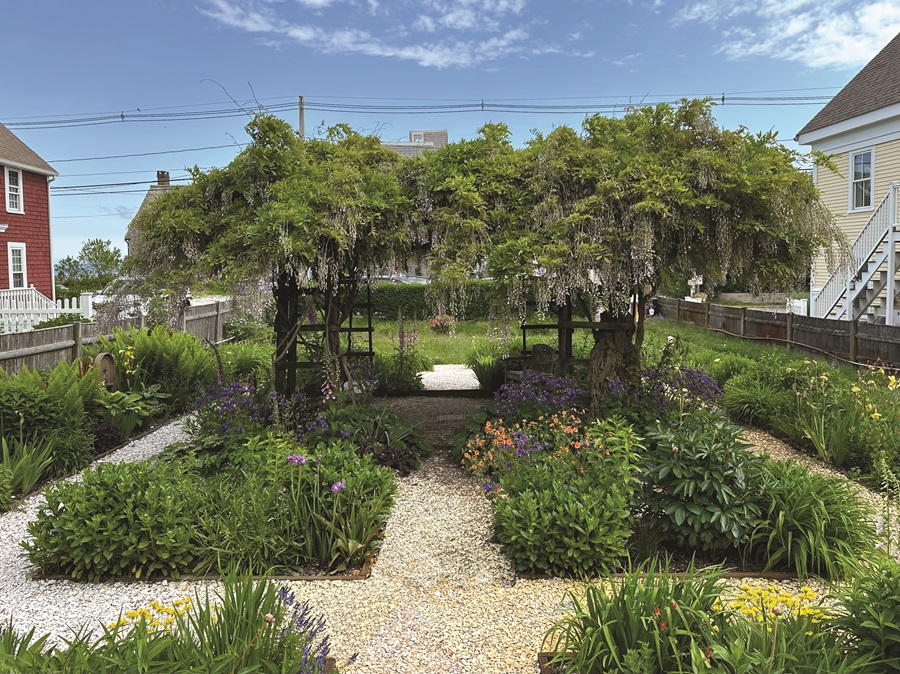
The garden has remained a perennial haven even after Suzanne’s death in 1998, thanks to attentive plantsmen like Gordon Gaskill and Frankie Coburn and a $250,000 purchase by the town in 2009. After the purchase, however, the burden of maintenance fell largely on Jon Sinaiko, who lives up the hill across Bradford Street in a house that overlooks the garden. It got to be a lot.
“I sort of religiously tried to keep the town uninvolved because I didn’t want to burden the DPW,” he says.
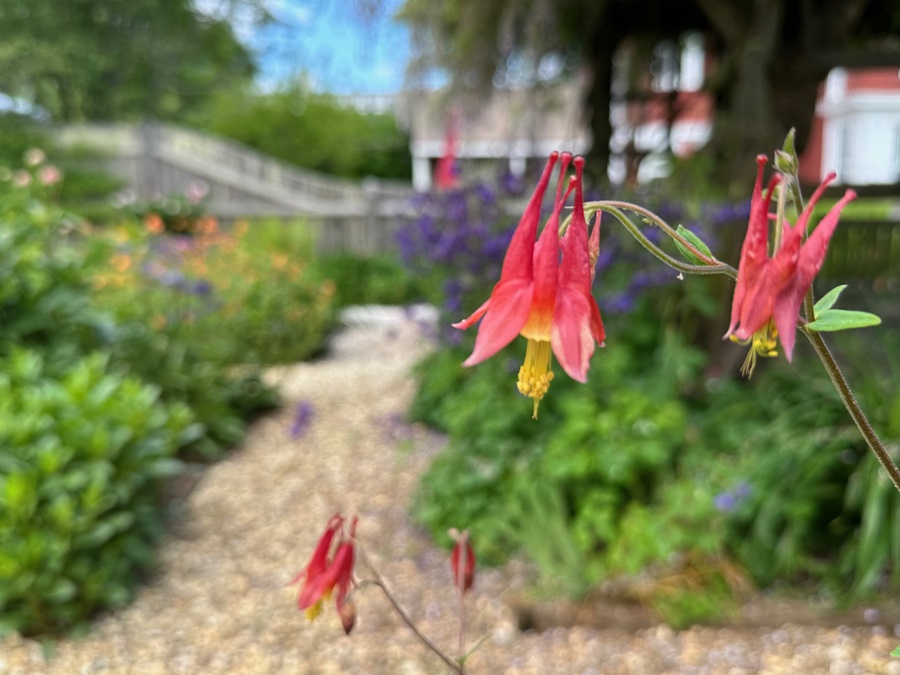
The whole community got involved instead. With blessings and support from Sinaiko and his wife, Camille Cabrey, a new circle of green thumbs has been restoring the garden over the past three years. Their dedication has paid off: last July, Suzanne’s was the first stop on the Provincetown Art Association and Museum’s 24th annual Secret Garden Tour.
Leading that restoration is Rob Pilarski, who, after moving to town in 2020 with his husband, Chet Domitz, started to miss the big garden they left behind in Columbus, Ohio. The couple found themselves wandering down the street to Suzanne’s Garden, as they had done during summer visits to Provincetown for two decades.
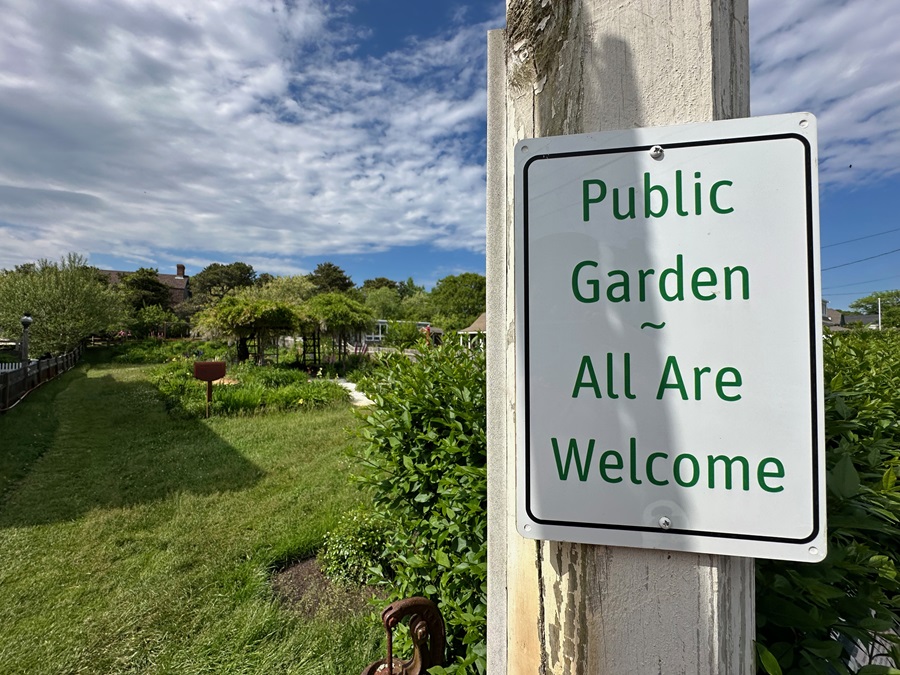
“I realized Suzanne’s would be my garden fix,” says Pilarski. “I see the garden as part of the community.” Over the past three summers he has put in some 600 hours of work, pruning back the garden’s overgrown areas and rediscovering its essence.
“The garden has a very strong European influence: the symmetry and layout of it is French; the plants that spill over the pathways are English,” says Domitz. “At the same time, you have the seashore allusions, like the broken shells on the pathway.”
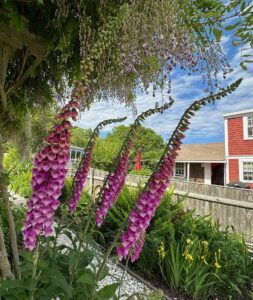
Pilarski says he has culled about half of the garden’s total plant matter — pulling out weeds and invasive species and thinning a massively overgrown section of Black-Eyed Susans. Only in the last year did replanting get underway. Pilarski and friends saved many of the original plants, from asters to foxgloves to a “spectacular set” of cinnamon ferns, while adding about six dozen new ones.
Pilarski solicited donations from local gardeners on social media, which led him to David Geiger, who maintains an impressive greenhouse in the West End. Geiger grows some things from seed and others from cuttings and divisions. He has donated close to 100 plants to the renovation.
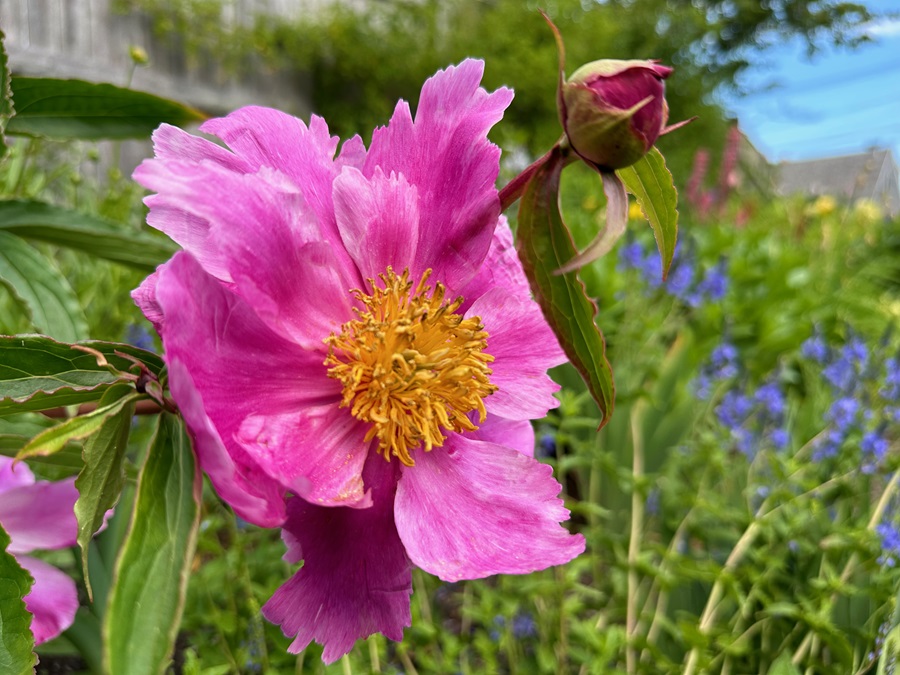
“There’s probably a very tiny daylily,” says Geiger. “I think I gave Rob some Bletillas, a type of orchid that’s easy to grow. I gave him some Helenium, some Japanese irises, some Agapanthus. I might have given Dendranthema. I don’t think he wanted any peonies.”
Geiger, who has also donated plants to Heritage Gardens in Sandwich and Polly Hill Arboretum on Martha’s Vineyard, likes to experiment with what plants can survive and thrive in this climate. “If people go and see the plants I’ve donated, they can see what can be grown in Provincetown,” he says.
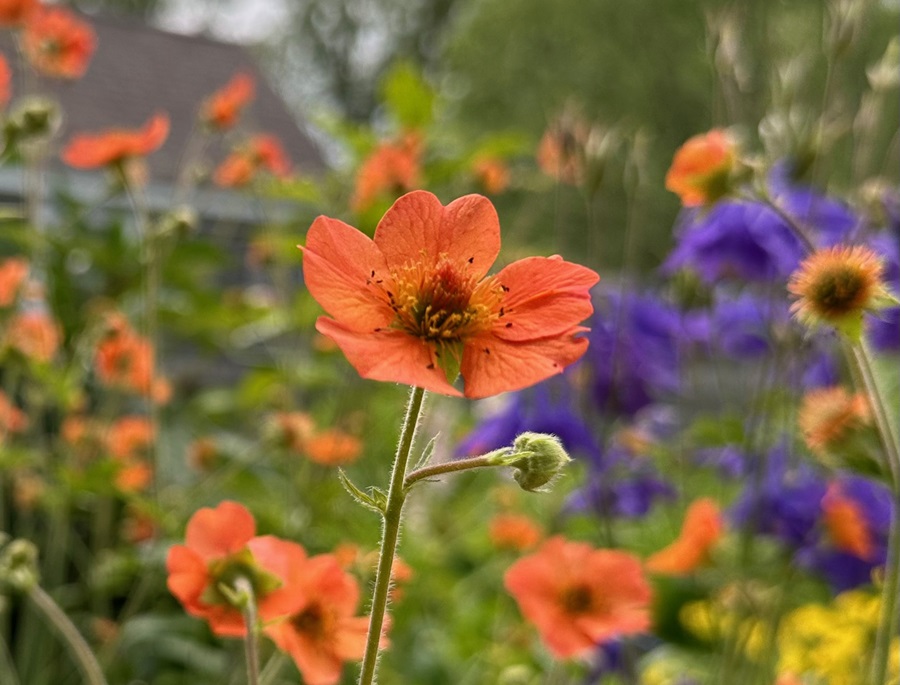
Another person who has been important to the garden’s restoration is Romaine McComb. Although she maintains her own garden at home on Commercial Street, she would wind up in Suzanne’s on walks with her dogs.
“I became a deadheader,” says McComb. “I would wander down the street with my pruners and gardening gloves to clip the dead blooms.”
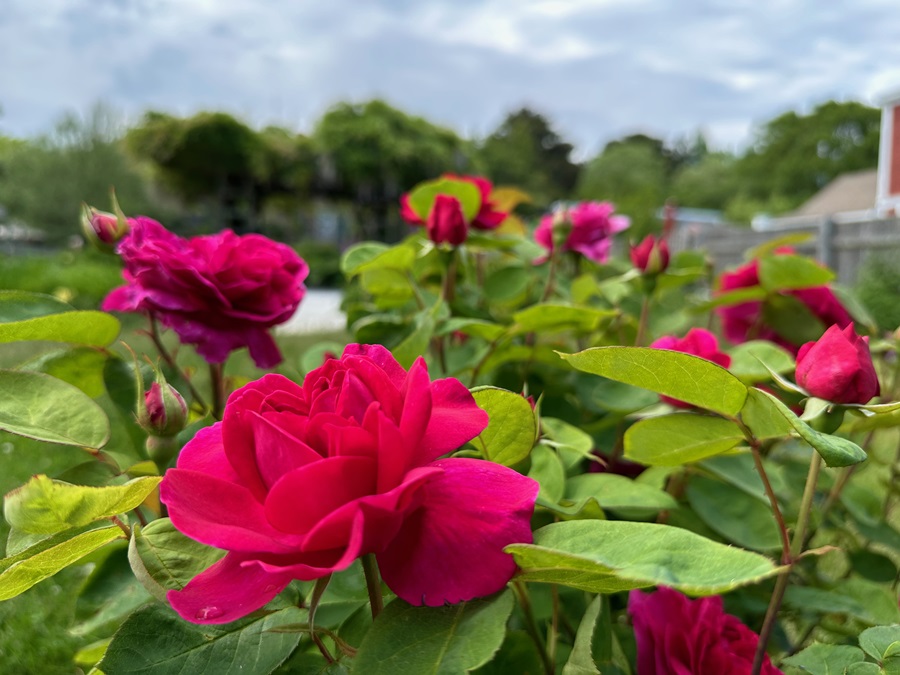
McComb has also put her own mark on the garden. “She has adopted certain corners and certain plants, like a clematis vine that grows on the fence,” says Domitz.
The town has also stepped up, with plans to put in a new well and electricity hookup and take over mowing and yard waste disposal, which Jon Sinaiko had previously handled.
And last summer, Pilarski added a sign to make it clear to passersby that the garden is public and open to all.
